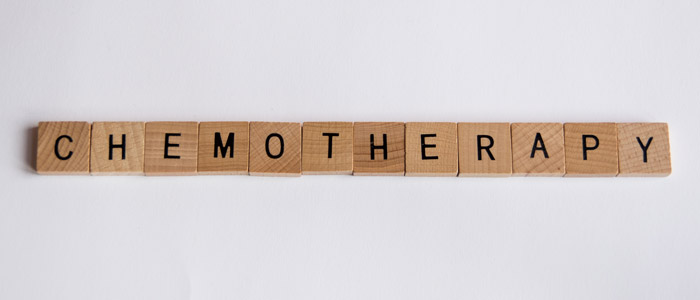"The application relates to the identification that cannabinoids, such as cannabidiol can be used to treat inflammatory diseases. Cannabinoids for use in treating inflammatory diseases, methods of treating inflammatory diseases and cannabinoids in combination with pharmaceutically acceptable carriers are claimed.This invation relates to anti-inflammatory agents, and in particular to the use of cannabinoids for the treatment of inflammatory diseases such as rheumatoid arthritis, multiple sclerosis and Crohn's Disease, and to medicinal preparations containing cannabinoids".
The inventors [Raphael Mechoulam,Marc Feldmann,
Anne-Marie Malfait,
Ruth Gallily]
BACKGROUND OF THE INVENTION
Cannabis sativa, commonly known as marijuana, has been used for several years for its medicinal effects, including antipyretic and analgesic properties. Approximately 80 cannabis constituents, termed cannabinoids, naturally occur as 21 carbon atom compounds of cannabis and analogues of such compounds and their metabolites
The major psychoactive component of marijuana is Delta-9-tetrahydrocannabinoid (THC), which has been widely studied. Studies have shown that THC affects growth, development and reproductive activity Studies in mice have shown that THC suppresses antibody formation against sheep red blood cells and causes changes in cytokine production. In vitro studies, however, have shown that THC may suppress or enhance (depending on dosage) the production of various cytokines such as IL-1, IL-6 and TNFα by leukocytic cells.
Cannabidiol (CBD) is present in most cannabis preparations (hashish, marijuana, ganja) in higher concentrations than THC.
Cannabidiol has no psychotropic (cannabimimetic activity) and does not bind either the brain or the peripheral receptors, CB1 and CB2 respectively. Cannabidiol has, however, been observed to have anticonvulsant effects. Cannabidiol has also been effective in animal models predictive of antipsychotic activity, and has been found to have antipsychotic effects in the, case of schizophrenia
What is claimed is:
1. A method of treating a patient suffering from rheumatoid arthritis comprising the step of administering to the patient a pharmaceutically effective amount of cannabidiol.
2. A method of treating a patient suffering from multiple sclerosis comprising the step of administering to the patient a pharmaceutically effective amount of cannabidiol.
3. A method of treating a patient suffering from ulcerative colitis comprising the step of administering to the patient a pharmaceutically effective amount of cannabidiol.
4. A method of treating a patient suffering from Crohn's disease comprising the step of administering to the patient a pharmaceutically effective amount of cannabidiol.
5. The method as in any one of claims 1-4, wherein the cannabidiol is combined with an anti-inflammatory compound.
6. The method as in any one of claims 1-4, wherein the cannabidiol is combined with a pharmaceutically acceptable carrier.
7. The method as in any one of claims 1-4, wherein the effective amount to be administered is between 1 μg/kg/day to 50 mg/kg/day of patient body weight.
SUMMARY OF THE INVENTION
The inventors have now unexpectedly found that cannabinoids may be used to treat inflammatory diseases, such as rheumatoid arthritis and Crohn's disease. Inflammatory diseases involve the complex interaction between several components such as Interleukins and various mediators such as nitric oxide.
Cannabinoids have been found by the inventors to act as anti-inflammatory agents in vivo.
Accordingly, a first aspect of the invention provides use of one or more cannabinoids as an anti-inflammatory agent.
Preferably, the cannabinoid is an isolated cannabinoid such as cannflavone-2 (formula I) or a cannabinoid having the general formula II.
Preferably the cannabinoid is used as an anti-inflammatory agent against inflammatory diseases, especially rheumatoid arthritis or Crohn's Disease, sarcoidosis, asthma, Alzheimer s disease, multiple sclerosis, Psoriasis, ulcerative colitis, osteoarthritis or spondyloarthropathy (erg. ankylosing spondylitis).
The invention also provides a method of treating a patient suffering from an inflammatory disease comprising the step of administering to the patient a pharmaceutically acceptable amount of a cannabinoid.
The cannabinoid is preferably as defined above.
The patient is preferably a mammal such as a human.
Cannabinoids may be used separately or as mixtures of two or more cannabinoids. They may be combined with one or more pharmaceutically acceptable compounds such as carriers.
The invention also provides the use of one or more cannabinoids as previously defined in the manufacture of a medicament to treat inflammatory diseases.
A further aspect of the invention provides a method of treating an inflammatory disease comprising the step of administering to a patient one or more cannabinoids as previously defined. The cannabinoids may for example be applied orally, intramuscularly, subcutaneously, intradermally, intravenously, by nasal spray or topically.
As a general proposition, the total pharmaceutically effective amount of cannabinoid administered will be in the range of 1 μg/kg/day to 50 mg/kg/day of patient body weight, preferably 2.5 to 10 mg/kg/day especially 5 mg/kg/day.
The invention also relates to medicinal preparations, including topical formulations, capsules, tablets and/or injectable formulations, containing one or more cannabinoids as previously defined for use as anti-inflammatory agents.
Preferably the cannabinoids, according to any previous aspect of the invention, are used or combined with one or more known anti-inflammatory compounds, especially anti-rheumatoid arthritis compounds, such as methotrexate. This allows advantageous properties of the cannabinoids to be combined with known properties of the known compound(s).













.png)

.png)




